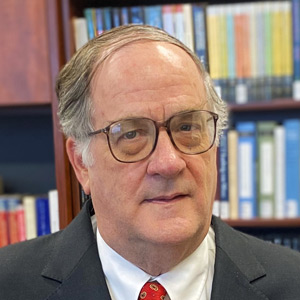Part two of four of the series “The Crisis in Civil Rights: Recommended Readings on Race, Police, and the Welfare State.”
If you can read just one item on this list, then make it “Police Unions and Officer Privileges,” by Tate Fegley. If you can read only two, make your second choice Victims’ Rights, Restitution, and Retribution, by Williamson M. Evers.
“Abolish Qualified Immunity,” by Damon Root. Reason Magazine, October 2020.
Root writes, “Welcome to the bizarro world of qualified immunity, a place where the federal courts will acknowledge that a police officer violated the Constitution but then deem the officer not civilly liable for his unconstitutional actions because there was no prior court decision explicitly frowning on the same behavior.”
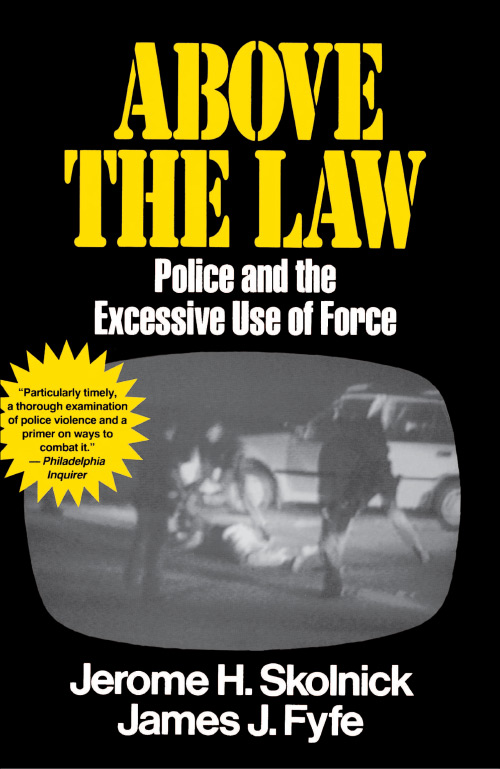 Above the Law: Police and the Excessive Use of Force, by Jerome H. Skolnick and James J. Fyfe. The Free Press, 1993.
Above the Law: Police and the Excessive Use of Force, by Jerome H. Skolnick and James J. Fyfe. The Free Press, 1993.
Debra Ann Livingston writes, “Skolnick and Fyfe are primarily concerned . . . with holding police officers to the rule of law—specifically, constraining them in the exercise of force. . . . Above the Law is about constraining bad cops from misusing their authority. . . . Drawing on the work of Van Maanen, Chevigny, and others, the authors dramatically portray the most common complaints as arising, not from the ‘clean’ arrest of a known burglar, drug dealer, or other serious offender, but from encounters between patrol officers and people who may not be engaging in criminal activity at all, but whom the police view as potentially threatening or up to no good. . . . Above the Law is an unsettling account of the worst in abuses of police authority.”
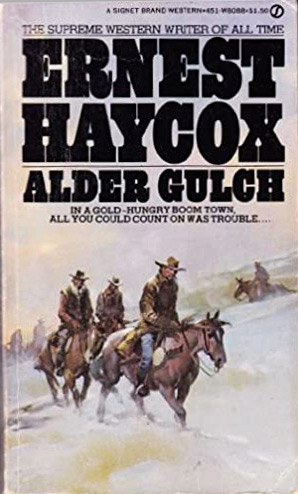 Alder Gulch, by Ernest Haycox. Stignet, 1978.
Alder Gulch, by Ernest Haycox. Stignet, 1978.
Alder Gulch is a Western historical novel, based on the story of the outlaw gang led by Sheriff Henry Plummer in southwestern Montana’s “Gold Country” in the 1860s. Haycox’s story Stage to Lordsburg (1937) was made into the famous movie Stagecoach (1939), starring John Wayne and directed by John Ford.
“The Boston Police Strike of 1919,” by Richard L. Lyons. The New England Quarterly, vol. 20, no. 2 (June 1947), pp. 147–68.
A brief history of one of the most important police strikes in American history. Lyons writes, “The basic issue was the right of the police to form a labor union in affiliation with the American Federation of Labor. . . . Do police officers have the same right as industrial employees to improve their bargaining power? In short, should any group of workers be able to engage in an activity which endangers the public safety?”
“Bust the Police Unions,” by Peter Suderman. Reason Magazine, October 2020
Suderman writes, “[T]he research finds roughly what one would expect given a public sector workforce with unions set up to protect police officer compensation while limiting discipline and oversight. Police get paid more, yet the public is no safer—and it's at greater risk of violence by police.”
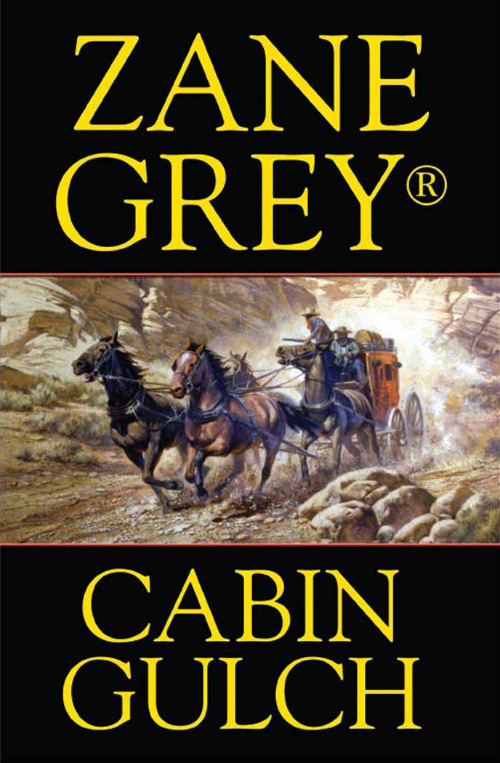 Cabin Gulch: A Western Story, by Zane Grey. Dorchester Publishing Company, 2007.
Cabin Gulch: A Western Story, by Zane Grey. Dorchester Publishing Company, 2007.
Cabin Gulch is based on the story of the outlaw gang led by Sheriff Henry Plummer in southwestern Montana’s “Gold Country” in the 1860s. A bowdlerized version of this Western historical novel was published in 1916 as The Border Legion. Zane Grey’s most famous Western novel was Riders of the Purple Sage (1912).
“The Case Against Qualified Immunity,” by Joanna C. Schwartz. Notre Dame Law Review, vol. 93, no. 5 (2018), pp. 1797–1851. Download PDF
From the abstract: “[M]ultiple aspects of the doctrine—including its disregard of officers’ bad faith, exacting requirements to clearly establish the law, and license to courts to grant qualified immunity without ruling on the underlying constitutional claims—hamper the development of constitutional law and may send the message that officers can disregard the law without consequence.”
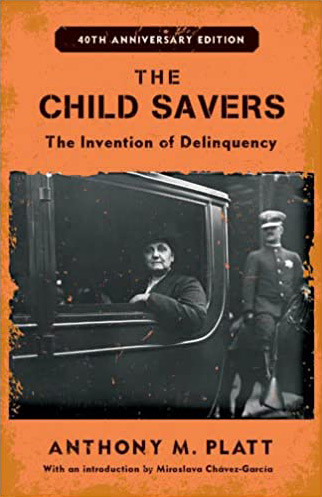 The Child Savers: The Invention of Delinquency, by Anthony M. Platt. Rutgers University Press, Expanded Edition, 2009.
The Child Savers: The Invention of Delinquency, by Anthony M. Platt. Rutgers University Press, Expanded Edition, 2009.
Platt was influenced by the revisionist historians Gabriel Kolko, William Appleman Williams, and James Weinstein, who endeavored to uncover the self-serving political efforts of “corporate liberals.” Platt sees the juvenile justice system set up by progressives not as a humanitarian reform project, but rather as a sophisticated system for the social control of youth. Miroslava Chávez-García writes, “Arguably, no work has done more to provoke sustained discussion over the nature of the juvenile court and those who worked so diligently for its formation as has Platt’s The Child Savers.”
“Collective Bargaining and Police Misconduct: Evidence from Florida,” by Dhammika Dharmapala, Richard H. McAdams, and John Rappaport. University of Chicago Coase-Sandor Institute for Law and Economics Research Paper No. 831, 2018.
Violent misconduct by sheriff’s deputies in Florida increased by 40 percent after they won collective bargaining rights, according to a study by three University of Chicago Law School researchers.
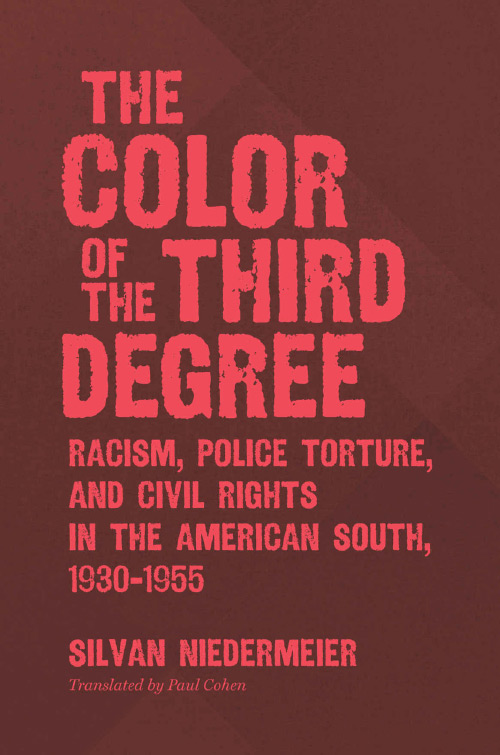 The Color of the Third Degree: Racism, Police Torture, and Civil Rights in the American South, 1930–1955, by Silvan Niedermeier. University of North Carolina Press, 2019.
The Color of the Third Degree: Racism, Police Torture, and Civil Rights in the American South, 1930–1955, by Silvan Niedermeier. University of North Carolina Press, 2019.
A history of the all-too-prevalent occurrence of police torture in the American South and the people who diligently worked to oppose the practice. The review in Choice reads, “This book explores the contested practice of police torture in the period between the heyday of lynching violence (1890–1930) and the civil rights era (1955–1960s). Drawing on NAACP records, FBI files, court documents, newspapers, and individual archival collections, Niedermeier . . . offers a complex history of both change and continuity. . . . Provides a dense, detailed, but accessible account of a crucial but often overlooked subject.”
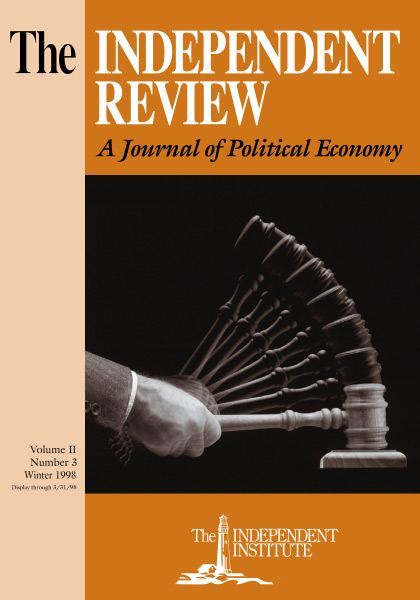 “Crime Control through Private Enterprise,” by Bruce L. Benson. The Independent Review, vol. 2, no. 3 (Winter 1998), pp. 341–371. Download PDF
“Crime Control through Private Enterprise,” by Bruce L. Benson. The Independent Review, vol. 2, no. 3 (Winter 1998), pp. 341–371. Download PDF
The Independent Institute’s synopsis reads, “Private firms are increasingly sought after to provide the four Ps of crime control: prevention, pursuit, prosecution, and punishment. Because the benefits of entrepreneurship in crime control are considerable—swifter justice and greater security at lower cost—policymakers may be forced to seriously consider lowering the legal obstacles that block full development of this trend.”
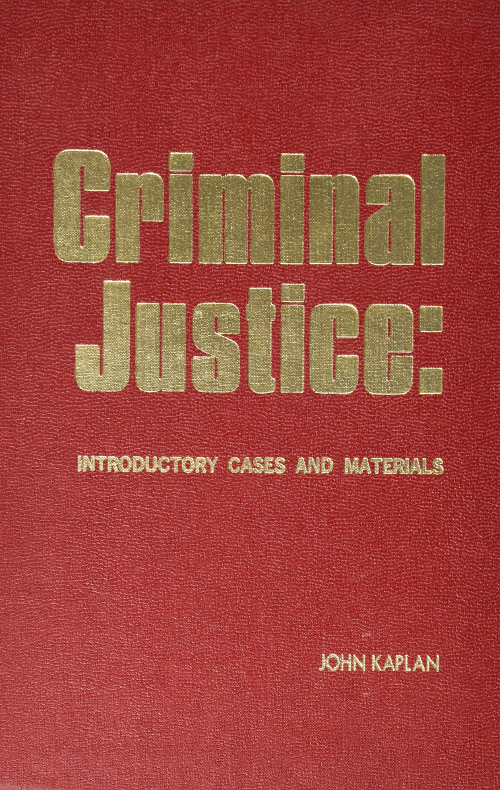 Criminal Justice: Introductory Cases and Materials, by John Kaplan. Foundation Press, Second Edition, 1978.
Criminal Justice: Introductory Cases and Materials, by John Kaplan. Foundation Press, Second Edition, 1978.
This is a textbook designed for undergraduates. There are later editions with additional coauthors added after Kaplan died. But the editions published during his lifetime exhibit the Stanford law professor’s unique classical liberal insights.
“Deception by Police,” by Jerome H. Skolnick. Criminal Justice Ethics, vol. 1, no. 2 (Summer/Fall 1982), pp. 40–54.
Debra Ann Livingston writes, “[Skolnick takes] issue with ‘deceptive’ interrogation tactics that police interrogators . . . commonly employ today. [He] suggests that the use of deception by police in questioning suspects may encourage cops to lie to judges when applying for warrants, to violate internal police organization rules against lying, and to perjure themselves in the courtroom. . . . [He] also posits that police deception in interrogation may further undermine public confidence in the police, as well as cooperation with them, and may even elicit false inculpatory statements.”
“Enhancing Accountability: Collective Bargaining and Police Enhancing Accountability: Collective Bargaining and Police Reform,” by Daniel DiSalvo. Manhattan Institute Report, 2021.
From the executive summary: “[W]e know less than we should about the role that police unions play in protecting abusive officers and undermining police–community relations. Although some academic literature on police unions exists—in which many of the findings suggest that the unions inhibit effective and accountable policing—the subject has not been intensively studied. Therefore, we do not know exactly what the reduction of job protections for officers or the alteration of collective bargaining could achieve; reformers and the public should keep their expectations in check....
This paper assesses the role of police unions in creating job protections for officers and how the recent wave of legislation interacts with collective bargaining and union contracts.... The overarching goal should be to strengthen the chain of accountability between street-level officers and their supervisors and to increase police professionalism—thereby reducing unjustified uses of force against civilians—by holding poorly performing officers to account.
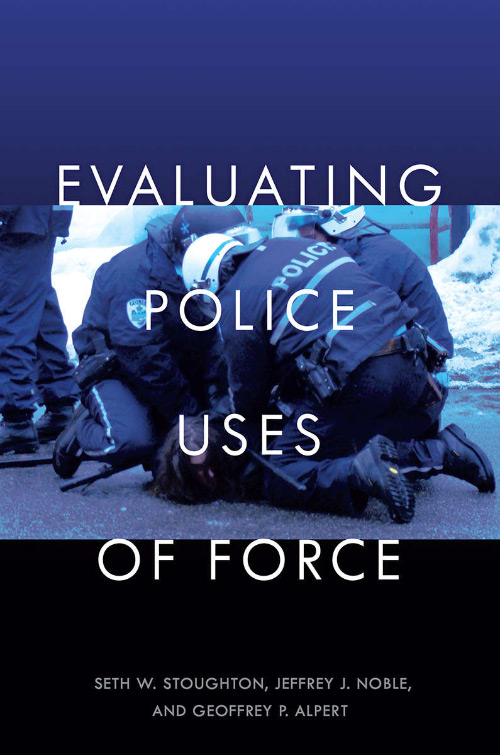 Evaluating Police Uses of Force, by Seth W. Stoughton, Jeffrey J. Noble, and Geoffrey P. Alpert. New York University Press, 2020.
Evaluating Police Uses of Force, by Seth W. Stoughton, Jeffrey J. Noble, and Geoffrey P. Alpert. New York University Press, 2020.
Robert VerBruggen writes in National Review, “In 1985, the Supreme Court ruled that when a police officer kills someone merely to prevent them from escaping, with no reason to believe there’s an imminent threat to life or limb, he violates the Constitution. When this happens, the officer can be sued under federal law. But in a few states—Alabama, Florida, Mississippi, and South Dakota—this antiquated practice is still officially sanctioned by state law, meaning it is a defense to criminal charges there. . . .
“Stoughton et al. provide a number of examples of ‘officer-created jeopardy.’ . . . [W]hen cops pull up too closely to someone they think is armed, jump out of the car, and wind up killing a twelve-year-old holding an Airsoft gun within two seconds, . . . the biggest problem was a bad early decision that made the situation worse, not the split-second reaction at the end.”
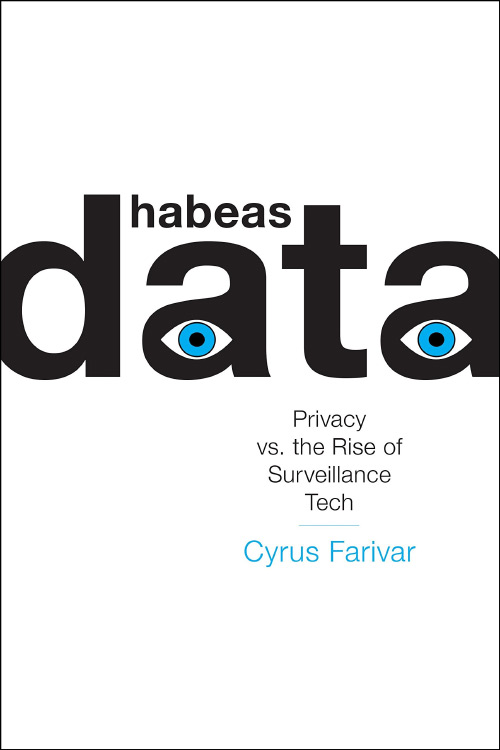 Habeas Data: Privacy vs. the Rise of Surveillance Tech, by Cyrus Farivar. Melville House, 2019.
Habeas Data: Privacy vs. the Rise of Surveillance Tech, by Cyrus Farivar. Melville House, 2019.
Investigative tech reporter shows how emerging technologies with little oversight and restrictions are being used by law enforcement. Farivar’s coverage is accompanied by a history of relevant Fourth Amendment case law. Robyn Greene writes, “Cyrus Farivar pulls back the curtain on how the government has transformed everyday technologies into surveillance machines, and public and private places into surveillance traps—part deep-dive into how everything from your smartphone to your home can be used as a surveillance tool, and part crash-course in the court cases that both help and fail to constrain the government’s most privacy-invasive activities. Should be at the top of everyone’s must-read list.”
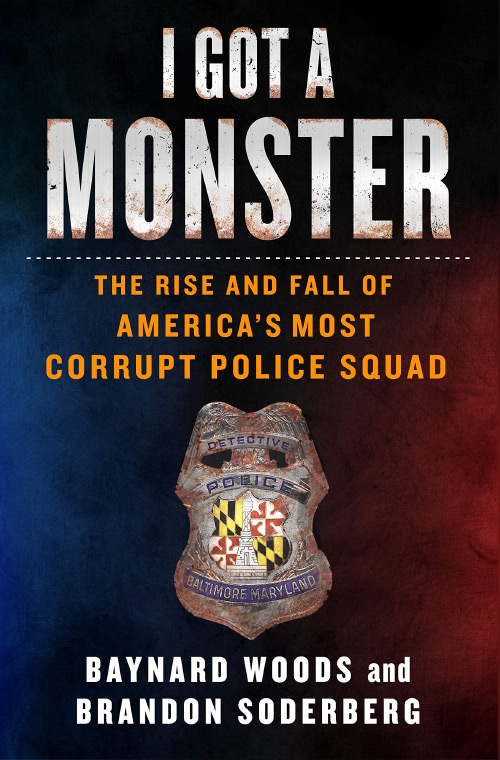 I Got a Monster: The Rise and Fall of America’s Most Corrupt Police Squad, by Baynard Woods and Brandon Soderberg. St. Martin’s Press, 2020.
I Got a Monster: The Rise and Fall of America’s Most Corrupt Police Squad, by Baynard Woods and Brandon Soderberg. St. Martin’s Press, 2020.
Kirkus Reviews writes, “The nearly unbelievable tale of widespread police corruption in a squad whose leader ran it ‘like a war machine.’ Woods and Soderberg meticulously reveal a group within the Baltimore Police Department that became a criminal enterprise all its own. . . . Few readers will close this page-turner doubting that the Gun Trace Task Force was anything but the most corrupt police group in the U.S.”
“In L.A. County, Gangs Wear Badges,” by Zak Cheney-Rice. New York Magazine, Intelligencer, Sept. 4, 2020.
Cheney-Rice writes, “The Los Angeles County Sheriff’s Department [is a] law-enforcement entity whose members regularly join criminal gangs, earn clout by harassing, assaulting, and killing county residents, and retaliate against their colleagues who dare to oppose them....
“[In addition to] the Executioners [who are said to] “dominate” the Compton sheriff’s office, at least nine other such gangs are known to operate across the department, and have done so for decades. ‘Vikings, Reapers, Regulators, Little Devils, Cowboys, 2000 Boys and 3000 Boys, Jump Out Boys, and most recently the Banditos and the Executioners,’ Matthew Burson, chief of the department’s professional standard division, told KABC ... of the LASD’s gang problem.”
“Is Qualified Immunity Unlawful?,” by William Baude. 106 California Law Review 45, (2018), pp. 45–90.
From the abstract: “The doctrine of qualified immunity operates as an unwritten defense to civil rights lawsuits brought under 42 U.S.C. § 1983. . . . [Justices] of the Supreme Court have offered three different justifications for imposing this unwritten defense on the text of Section 1983. First, that the doctrine of qualified immunity derives from a common-law ‘good-faith’ defense. Second, that it compensates for an earlier putative mistake in broadening the statute. Third, that it provides ‘fair warning’ to government officials, akin to the rule of lenity. On closer examination, each of these justifications falls apart for a mix of historical, conceptual, and doctrinal reasons. There was no such defense; there was no such mistake; lenity ought not apply.”
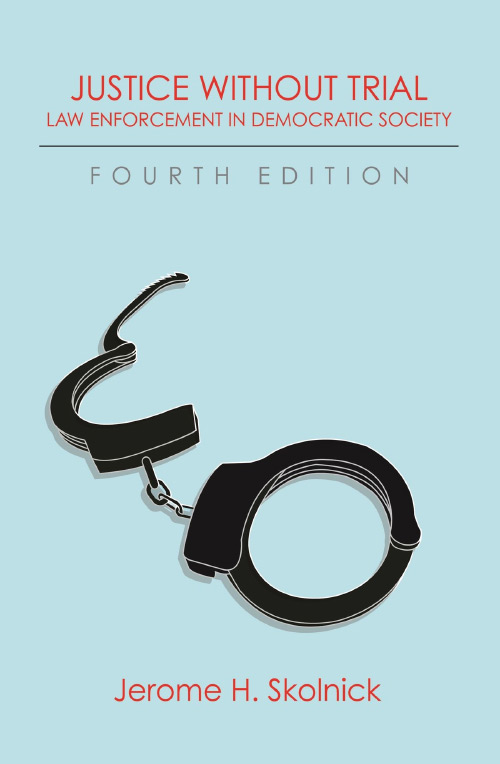 Justice Without Trial: Law Enforcement in Democratic Society, by Jerome H. Skolnick. Quid Pro Books, Fourth Edition, 2013.
Justice Without Trial: Law Enforcement in Democratic Society, by Jerome H. Skolnick. Quid Pro Books, Fourth Edition, 2013.
A sociological study of police culture and police accountability.
“Let the Sunshine In: Illuminating the Powerful Role Police Unions Play in Shielding Officer Misconduct,” by Katherine J. Bies. Stanford Law & Policy Review, vol. 28, no. 1 (January 2017), pp. 109–149. Download PDF
From the abstract: “[D]uring the rise of police unions to political power in the 1970s, police unions lobbied for legislation that shrouded personnel files in secrecy and blocked public access to employee records of excessive force or other officer misconduct. Today, these officer misconduct confidentiality statutes continue to prohibit public disclosure of disciplinary records related to police shootings and other instances of excessive force. . . . [P]olice unions are unparalleled in their ability to successfully advocate for policy proposals that conflict with traditional democratic values of accountability and transparency. ... [P]olice unions often strategically frame any opposition to their agenda of secrecy as endangering public safety and harming the public interest. However, police unions often conflate ‘the public interest’ with the private interests of police officers.”
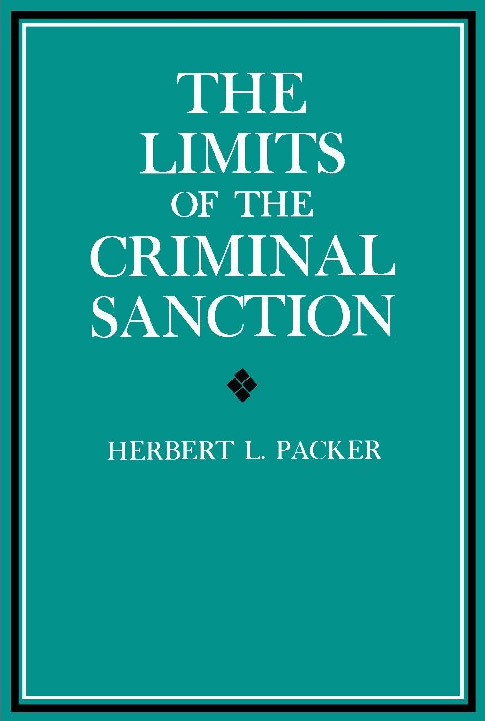 The Limits of the Criminal Sanction, by Herbert L. Packer. Stanford University Press, 1968.
The Limits of the Criminal Sanction, by Herbert L. Packer. Stanford University Press, 1968.
Packer explores the rationale and ethical justification of the criminal sanction. Hadar Aviram’s review reads, “The academic fascination with Herbert Packer’s two models of the criminal process [the Crime Control Model and the Due Process Model] has yielded an amazing thread of scholarship involving a variety of academic disciples, linking various topics, offering interesting insights on many criminal justice institutions and phenomena, and spanning more than four decades. . . . That this enthusiasm and engagement persist to this day is proof that criminal justice scholarship indeed stands on the shoulders of giants.”
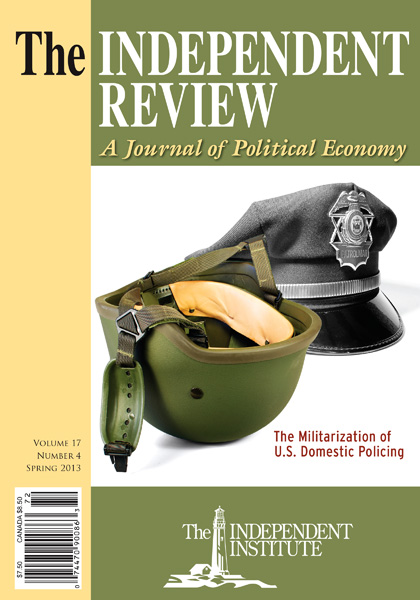 “The Militarization of U.S. Domestic Policing,” by Christopher J. Coyne and Abigail R. Hall. The Independent Review, vol. 17, no. 4 (Spring 2013), pp. 485–504.
“The Militarization of U.S. Domestic Policing,” by Christopher J. Coyne and Abigail R. Hall. The Independent Review, vol. 17, no. 4 (Spring 2013), pp. 485–504.
The Independent Institute synopsis reads, “The ongoing ‘wars’ on drugs and terrorism have helped to militarize domestic policing, giving us ‘no-knock’ raids and other tactics formerly considered off-limits for civilian law enforcement. A political-economic analysis of this trend explains how crises have eroded rules that were created to constrain the use of military power and separate domestic policing from military functions.”
“The Most Common Defenses of Qualified Immunity, and Why They’re Wrong,” by Jay Schweikert. Cato Institute, June 19, 2020.
Schweikert responds to four common arguments advanced by proponents of qualified immunity: (1) “We need qualified immunity so that police won’t hesitate when they have to make split‐second, life‐or‐death decisions”; (2) “Eliminating qualified immunity would negatively impact recruitment and retention of police officers because they would fear being sued”; (3) “Qualified immunity is necessary to prevent frivolous lawsuits against police officers”; and (4) “Qualified immunity protects police officers from the time and expense of litigation by quickly filtering out bad lawsuits.”
“The Neglect of Police Unions: Exploring One of the Most Important Areas of American Policing,” by Samuel Walker. Police Practice and Research, vol. 9, no. 2 (2008), pp. 95–112.
From the abstract: “Police unions are widely recognized as having a major influence on American policing, with respect to day-to-day management, disciplinary procedures, and police–community relations. Despite this important influence, however, police scholars have neglected police unions.”
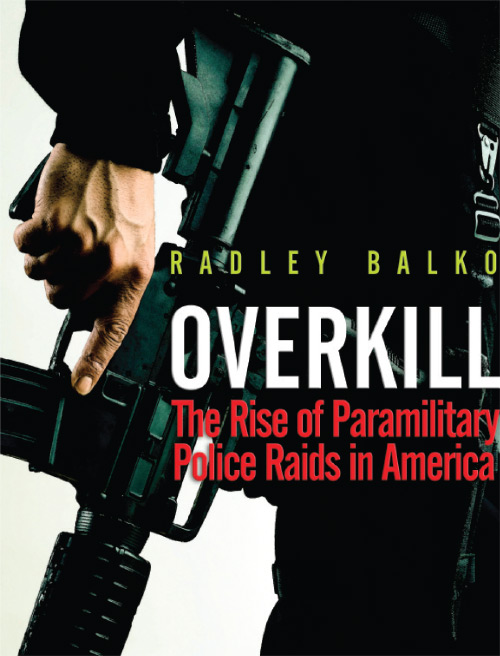 Overkill: The Rise of Paramilitary Police Raids in America, by Radley Balko. Cato Institute White Paper, 2006. Download PDF
Overkill: The Rise of Paramilitary Police Raids in America, by Radley Balko. Cato Institute White Paper, 2006. Download PDF
How increased SWAT team raids have chipped away against the right to defend one’s own home against intruders, with disastrous consequences. Balko “presents a history and overview of the issue of paramilitary drug raids, provides an extensive catalogue of abuses and mistaken raids, and offers recommendations for reform.”
“Police Disciplinary Appeals,” by Stephen Rushin. University of Pennsylvania Law Review, vol. 167, no. 3 (February 2019), pp 545–610. Download PDF
From the abstract: “Scholars and experts generally agree that rigorous enforcement of internal regulations within a police department promotes constitutional policing by deterring future misconduct and removing unfit officers from the streets. In recent years, though, a troubling pattern has emerged. Because of internal appeals procedures, police departments must often rehire or significantly reduce disciplinary sanctions against officers that have engaged in serious misconduct. But little legal research has comprehensively examined the appeals process available to officers facing disciplinary sanctions.”
“Police Indemnification,” by Joanna Schwartz. New York University Law Review, vol. 89, no. 3 (June 2014), pp. 887–1005. Download PDF
Individual policemen almost never pay their own settlements. During the study period, governments paid 99.98 percent of the $730 million in damages plaintiffs recovered in lawsuits stemming from alleged police misconduct. “Officers did not contribute to settlements and judgments even when they were disciplined, terminated, or criminally prosecuted for their misconduct,” Schwartz writes. “And officers were not required to contribute to settlements and judgments even when applicable law prohibited indemnification.”
“Police Misconduct and Public Accountability,” by Wendy McElroy. Independent Institute, October 1, 2010.
How Police Disclosure Laws—which block the details of an officer’s alleged misconduct—stifle transparency and accountability. McElroy writes, “When anyone is given a gun and broad authority to use it in public, that same public needs to know if the gun and the authority are being misused. The public also needs to know the particulars of how abuse accusations are being investigated. For example, has a particular police department established such a high burden of proof that virtually no accusation against an officer can be sustained?”
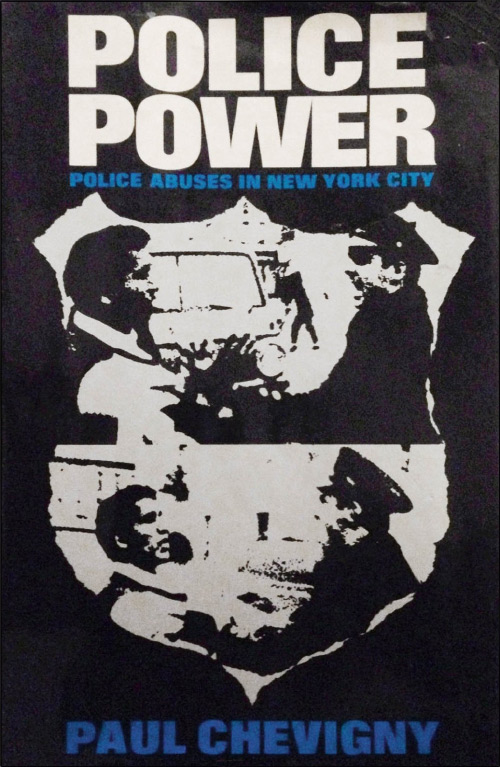 Police Power: Police Abuses in New York City, by Paul Chevigny. Random House 1969.
Police Power: Police Abuses in New York City, by Paul Chevigny. Random House 1969.
The Kirkus review reads, “A broad, thorough, and judicious study by an A.C.L.U. lawyer who collected complaints in New York City during 1967 and investigated the ‘authenticated’ ones. It combines two sure appeals—vivid trial records and the police brutality issue. Chevigny discusses his constant difficulties with evidence and witnesses, elaborates the procedures involved, criticizes the attitudes of the court and the D.A.’s office, and explains the ‘cover charge’ system of arrests to cancel police mistakes. Rubrics for police abuses include false arrest, assault, streetcorner incidents, arrest for recording badge numbers, mass police action, search and seizure, and systematic harassment. Chevigny finds also that members of outcast groups tend to provoke the police by their mere presence. . . . It’s one of the best books . . . on the subject.
“The Police Union,” by Randy Petersen. RightonCrime.com, January 31, 2019.
Former police officer and former police union member Randy Petersen describes how police unions, like any other labor union, privilege membership, without necessarily any regard to the quality of members’ services in the field of endeavor. Petersen writes, “The right-of-center leanings of the law enforcement profession often collide philosophically with the left-leaning politics of unions, making a police union an oddity in itself. This relationship highlights the contrast in union priorities from the priorities of individual members because they are sometimes in opposition to one another. The union supports legislation that will increase membership and opposes legislation or legislators that might threaten it. Because union issues and conservative issues are almost never the same, political endorsements by the union tend to run contrary to the voting preferences of many police officers. This would not be problematic in and of itself, except that the union is often mistakenly looked at as representative of the membership.”
“Police Union Contracts,” by Stephen Rushin. Duke Law Journal, vol. 6, no. 6 (2017). Download PDF
From the abstract: “By collecting and analyzing an original dataset of 178 union contracts from many of the nation’s largest police departments, this article shows how these agreements can frustrate police accountability efforts. A substantial number of these agreements limit officer interrogations after alleged misconduct, mandate the destruction of disciplinary records, ban civilian oversight, prevent anonymous civilian complaints, indemnify officers in the event of civil suits, and limit the length of internal investigations. In light of these findings, this article theorizes that the structure of the collective bargaining process may contribute to the prevalence of these problematic procedures.”
“Police Unions,” by Catherine L. Fisk and L. Song Richardson. George Washington Law Review, vol. 85, no. 3 (2017)
From the abstract: “Perhaps no issue has been more controversial in the discussion of police union responses to allegations of excessive force than statutory and contractual protections for officers accused of misconduct, as critics have assailed such protections and police unions defend them. For all the public controversy over police unions, there has been relatively little legal scholarship on them. . . . The scholarly deficit has substantial public policy consequences, as groups ranging from Black Lives Matter to the U.S. Department of Justice are proposing legal changes that will require the cooperation of police labor organizations to implement. This article fills that gap.”
“Police Unions and Officer Privileges,” by Tate Fegley. The Independent Review, vol. 25, no. 2 (Fall 2020), pp. 165–186. Download PDF
Fegley writes, “Although the fact that police unions have a large impact on police practices and management is widely acknowledged, they have been neglected as a research topic. The National Academy of Science’s comprehensive review of the literature on policing in America in 2004 contains one reference to police unions. . . . Furthermore, Marcia McCormick notes, ‘Discussions in the legal literature about the way that police culture contributes to misconduct or efforts to stymie reform mention unions mostly in passing, without considering them separate from law enforcement officials.’”
“Police Unions and Police Misconduct: What the Research Says About the Connection,” by Christopher Ingraham. Washington Post, June 10, 2020.
An overview of studies showing how police union membership correlates with increased barriers to firing of troublesome officers in addition to higher instances of alleged police misconduct. Ingraham writes, “In effect, officers in unionized police forces are more likely to be the subjects of an excessive-force complaint, but more likely to beat the allegations in disciplinary hearings.”
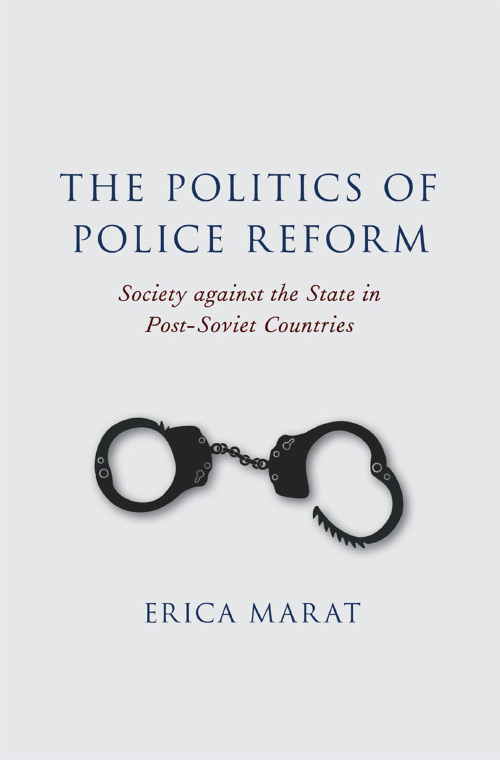 The Politics of Police Reform: Society against the State in Post-Soviet Countries, by Erica Marat. Oxford University Press, 2018.
The Politics of Police Reform: Society against the State in Post-Soviet Countries, by Erica Marat. Oxford University Press, 2018.
A comparative analysis of police reform efforts in post-Soviet countries, in which case studies provide exemplars showing why certain police reform movements succeed, while others fail. One of Marat’s important insights is that the impetus for reforms can be a response to a political threat, and reforms are surprisingly often accepted to “ensure the survival of the incumbent political regime, be it recently elected or in power for some period of time.” Though, over time, the reform process has resulted in beneficial change in the countries investigated.
“Predictive Policing Explained,” by Tim Lau. Brennan Center for Justice, 2020.
A very accessible explanation of “predictive policing.” What predictive policing is, its prevalence, and the concerns it raises.
“Private Policing in San Francisco,” by Edward P. Stringham. Working Paper No. 74, Independent Institute, December 21, 2009. Download PDF
From the Independent Institute synopsis: “This paper provides an analysis of one of the longest established private police groups in America, the San Francisco Patrol Special Police. Dating back to the days of the Gold Rush, the Patrol Special Police are a collection of independent companies that are authorized in the City Charter to patrol different neighborhoods at the request of private clients. A survey is conducted to investigate why private parties pay the Patrol Special Police rather than simply relying on government police. The results indicate that the Patrol Special Police play an important role in providing safety that citizens cannot obtain if they had to rely on the safety services of the San Francisco Police Department. Yet despite these evident benefits, the Patrol Special Police face some challenging political and regulatory obstacles. This article finds evidence that members of the S.F.P.D. have been using regulations to restrict competition and effectively take over business using the force of law. It documents some of the expenses to taxpayers of these practices and offers some suggestions for regulatory reform.”
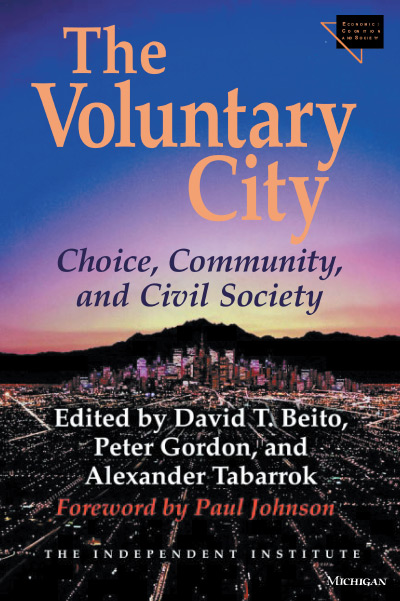 “The Private Provision of Police During the Eighteenth and Nineteenth Centuries,” by Stephen Davies, in The Voluntary City: Choice, Community, and Civil Society, edited by David T. Beito, Peter Gordon, and Alexander Tabarrok, foreword by Paul B. Johnson. University of Michigan Press for the Independent Institute, 2002.
“The Private Provision of Police During the Eighteenth and Nineteenth Centuries,” by Stephen Davies, in The Voluntary City: Choice, Community, and Civil Society, edited by David T. Beito, Peter Gordon, and Alexander Tabarrok, foreword by Paul B. Johnson. University of Michigan Press for the Independent Institute, 2002.
Few know that the modern orientation of policing in America, that is, the state monopoly on maintaining public order, is a relatively modern invention. Fewer still know that private organizations offered public protection in a vibrant and competitive market. In his entry, Davies shows how contracted-out security, prosecutorial associations, and independent watches changed over into contemporary public policing. Davies's contribution stands out for including a history of British influence on early American law enforcement, in addition to providing an explanation of how private associations dealt with free-rider problems.
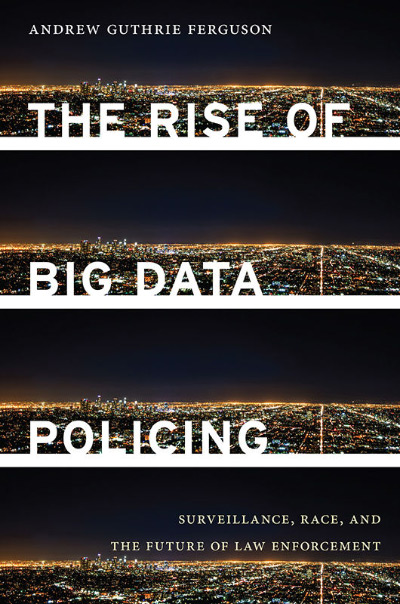 The Rise of Big Data Policing, by Andrew Guthrie Ferguson. New York University Press, 2019.
The Rise of Big Data Policing, by Andrew Guthrie Ferguson. New York University Press, 2019.
Ferguson, a nationally recognized expert on predictive policing and the Fourth Amendment, covers the Orwellian costs of data-driven policing. Jeffrey Fagan writes, “The Rise of Big Data Policing shifts our frame of reference on modern policing from the celebration of aggressive patrol tactics to urgent questions of the role [of] new police technologies in the production of security, the risks to freedom, and the levers of social control in the expanding surveillance state. Andrew Ferguson opens a window to define, categorize, understand, and showcase the transformation and digital deregulation of policing, and its implications for liberty and security. Ferguson teaches us not only the fault lines in how police watch us, but how we can turn the tables to use new algorithms to watch the police. At stake is nothing less than individual liberty and the democratic control of policing.”
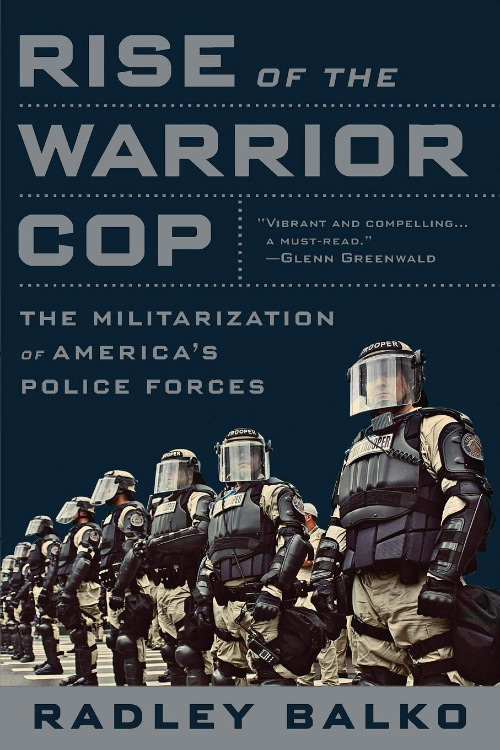 Rise of the Warrior Cop: The Militarization of America’s Police Forces, by Radley Balko. Public Affairs, Reprint Edition, 2014.
Rise of the Warrior Cop: The Militarization of America’s Police Forces, by Radley Balko. Public Affairs, Reprint Edition, 2014.
A history of the factors that lead to the militarization of America’s local police. Ron Paul writes, “Rise of the Warrior Cop is a comprehensive look at the reasons for, and the results of, the increasing militarization of law enforcement.”
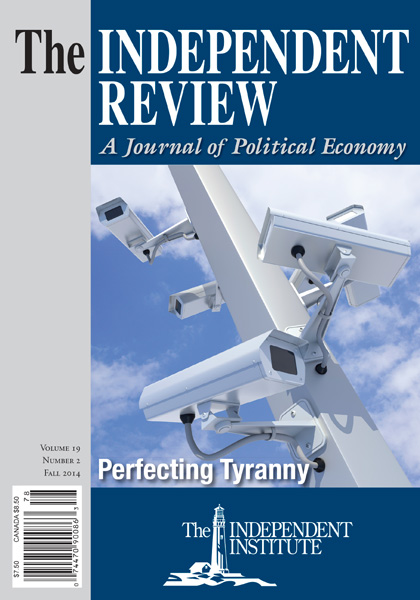 “Review of Rise of the Warrior Cop: The Militarization of America’s Police Forces, by Radley Balko,” by Anthony Gregory. The Independent Review, vol. 19, no. 2 (Fall 2014), pp. 271–275.
“Review of Rise of the Warrior Cop: The Militarization of America’s Police Forces, by Radley Balko,” by Anthony Gregory. The Independent Review, vol. 19, no. 2 (Fall 2014), pp. 271–275.
In this review of author Radley Balko’s book Rise of the Warrior Cop, Anthony Gregory explains how political trends over the past few decades have led to an unprecedented rise in the militarization of police. He explains that while there has been some outcry by far-left radicals and right libertarians, Republicans and Democrats have used the drug war as a guise to impose authoritarianism.
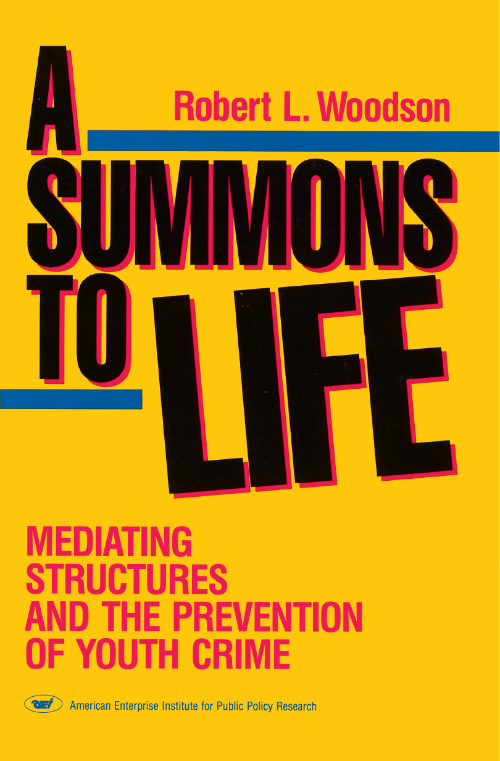 A Summons to Life: Mediating Structures and the Prevention of Youth Crime, by Robert L. Woodson. American Enterprise Institute Press, 1989. Download PDF
A Summons to Life: Mediating Structures and the Prevention of Youth Crime, by Robert L. Woodson. American Enterprise Institute Press, 1989. Download PDF
From Peter L. Berger’s preface: “The term ‘mediating structures’ [refers to] those institutions that stand between individuals in their private lives and the vast bureaucratic structures of a modern society. Foremost among these institutions are the family, organized religion, voluntary associations, the neighborhood, and ethnic or racial subcultures. . . .
“Woodson’s approach was distinctive in that it started out with one empirical case, then went on to analyze the reasons for success in that case and further to explore comparable cases elsewhere. The focal case was the House of Umoja, an initiative that had originated spontaneously within the black community in Philadelphia and had achieved some remarkable successes in changing the lives of young people long before any outside agencies took cognizance of it. Woodson’s focus on concrete social reality gives his book a tight unity from the description of the House of Umoja to an analysis of its social and psychological features, to a discussion of comparable experiments in other parts of the country, followed by more general discussions of the wider applicability of this model and its ramification for urban policy in general.”
“SWAT Team Raids: Overkill Fit Only for a Police State,” by Robert Higgs. The Beacon blog, Independent Institute, September 14, 2011.
A brief commentary on the increased prevalence of SWAT team deployment in the United States. Higgs writes, “Back in the heyday of Stalin’s USSR, the very hallmark of its totalitarianism was the dreaded ‘midnight knock on the door,’ in which the police simply hauled people away, sometimes never to be seen again and often for reasons unrevealed to relatives and acquaintances of the person abducted. To this terrifying scenario, the American state has added the excitement of flash grenades, broken windows, battered doors, and often unnecessary gunfire.”
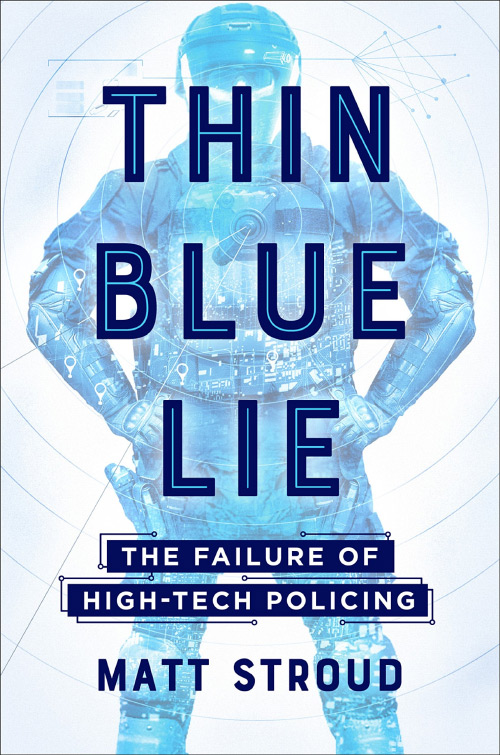 Thin Blue Lie: The Failure of High-Tech Policing, by Matt Stroud. Metropolitan Books, 2019.
Thin Blue Lie: The Failure of High-Tech Policing, by Matt Stroud. Metropolitan Books, 2019.
Local police and police vendors have long touted new “tech” that will ensure the police make progress against crime. But technological innovations in policing, such as nonlethals, surveillance, and data management programs have produced unintended consequences for both crime and civil liberties. Norm Stamper writes, “Matt Stroud has given us the definitive case against ‘high-tech policing.’ While he doesn’t discount the potential good that can come from sophisticated technologies, he also recognizes that these technologies may not represent ‘progress’ at all. Instead, they often constitute a demonstrable threat to Americans’ civil liberties, not to mention their personal safety. Technological development doesn’t make U-turns, but by heeding the wisdom contained in Stroud’s analysis, activists, lawmakers, and police officials can make sure the road forward is lit by the bright lights of transparency and protected by strong legislative and policy guardrails.”
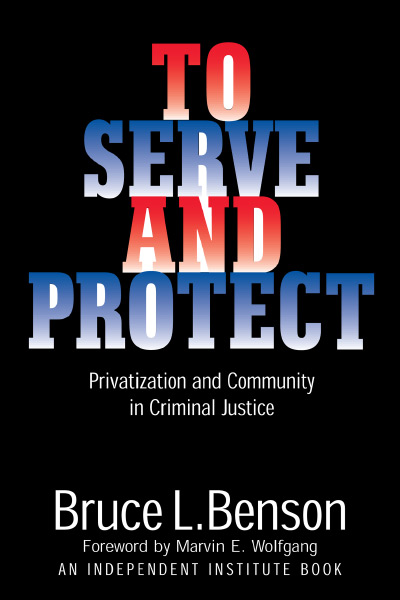 To Serve and Protect: Privatization and Community in Criminal Justice, by Bruce L. Benson. New York University Press for the Independent Institute, 1998.
To Serve and Protect: Privatization and Community in Criminal Justice, by Bruce L. Benson. New York University Press for the Independent Institute, 1998.
From the Independent Institute synopsis: “[Benson] examines the gamut of private-sector input to criminal justice—from private-sector outsourcing of prisons and corrections, security, arbitration to full ‘private justice’ such as business and community-imposed sanctions and citizen crime prevention. Searching for the most cost-effective methods of reducing crime and protecting civil liberties, Benson weighs the benefits and liabilities of various levels of privatization, offering correctives for the current gridlock that will make criminal justice truly accountable to the citizenry and will simultaneously result in reductions in the unchecked power of [departments of police].”
“Trading Places: Swapping the Roles of Police and Military Is Bad for the Republic,” by Ivan Eland. Independent Institute, July 29, 2016.
In a period of growing discontent with contemporary police forces, this article by Eland points to a recently developing problem. Militarization of police has occurred rapidly across the nation, and this has led to severe breaches of civil liberties.
“The Trouble with Police Unions,” by Daniel DiSAlvo. National Affairs, whole no. 45 (Fall 2020).
DiSalovo writes, “[T]he left appears willing to excommunicate police unions, while conservatives are disposed to incorporate them into their critique of public-sector unions overall. This means that both sides will have to concede that the problems posed by police unions in particular are similar to those that plague public-sector unions in general. Such an admission is exactly what many leaders of organized labor want to avoid—they fear criticisms of police unions will be used to tar other public-sector unions.
“Generally speaking, opponents of public-sector unions offer two main criticisms. One is that unions drive up the costs of government by increasing the wages and benefits for public servants. The other is that unionization and collective bargaining induce bureaucratic sclerosis, making it nearly impossible to re-organize public agencies to improve their performance. Government is thus forced to do less while spending more, which is a recipe for public frustration and mistrust.”
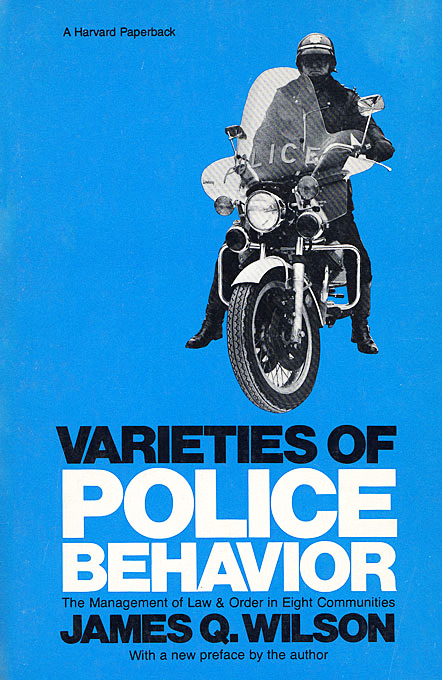 Varieties of Police Behavior: The Management of Law and Order in Eight Communities, with a New Preface by the Author, by James Q. Wilson. Harvard University Press, 1978.
Varieties of Police Behavior: The Management of Law and Order in Eight Communities, with a New Preface by the Author, by James Q. Wilson. Harvard University Press, 1978.
Publisher’s promotional material: “In most large organizations, the lowest-ranking members perform the more routinized tasks and the means of accomplishing these tasks are decided by superiors, but in a police department the lowest-ranking officer—the patrolman—is almost solely responsible for enforcing those laws which are the least precise, the most ambiguous. Three ways or ‘styles’ of policing—the watchman, the legalistic, and the service styles—are analyzed and their relation to local politics is explored.”
Victims’ Rights, Restitution, and Retribution, by Williamson M. Evers, Independent Policy Report, Independent Institute, 1996.
The Independent Institute’s synopsis reads, “Almost all rehabilitation programs have failed to alter criminals’ habits or reduce recidivism rates. The existing criminal justice system further victimizes crime victims, reducing them to items of evidence used to determine guilt or innocence. This is because crimes have historically been treated as offenses against the state rather than against the actual victims. In this study, Evers argues that crime would be reduced, and greater justice done to victims, by changing the current criminal justice system to one emphasizing punitive restitution, with the crime victim at the center of the process.”
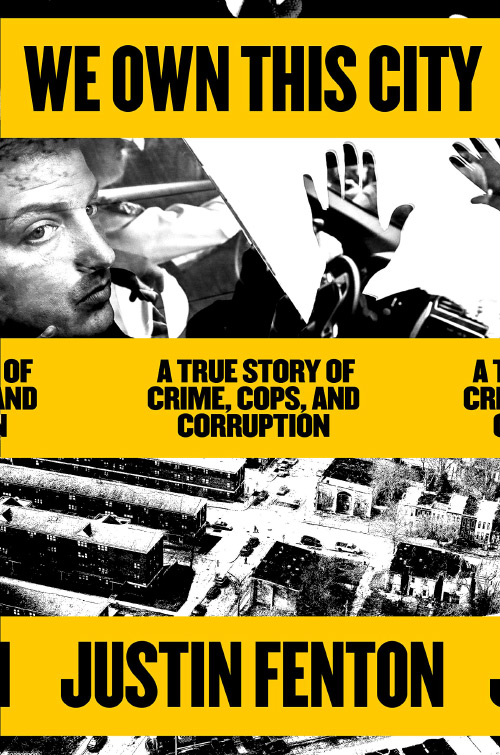 We Own This City: A True Story of Crime, Cops, and Corruption, by Justin Fenton. Random House, 2021.
We Own This City: A True Story of Crime, Cops, and Corruption, by Justin Fenton. Random House, 2021.
Maurice Chammah writes, “Fenton, a reporter for The Baltimore Sun, traces the rise and fall of his city’s Gun Trace Task Force, a group of officers who spent years robbing drug dealers, selling drugs themselves, skimming money from house seizures, planting evidence and defrauding taxpayers through overtime claims. Their reign produced the death of a civilian and numerous wrongful charges and convictions. Another officer died under mysterious circumstances one day before he was set to testify against members of the task force.”
“When It Comes to Juvenile Justice, Family Involvement Is Best for Kids and Communities,” by Haley Holik. RightonCrime.com, March 5, 2018.
How the problems of the “revolving door” in the juvenile justice system beckon reform. Holik writes, “Many kids in the state-run facilities are high-risk, high-need and require secure confinement for public safety reasons. They need to be held accountable for their actions, and secure, residential placement will always remain an important component of the juvenile justice system. But the state facilities are not the only means of simultaneously providing secure confinement for juvenile offenders and maintaining public safety.”
“Why Crime Declines,” by Bruce L. Benson. Independent Institute, January 1, 2000.
Benson describes how the private-sector responses to crime in the latter decades of the twentieth century were especially responsible for the dramatic reduction in crime in the United States.
“Why the Disadvantaged Bear the Cost of Police Militarization,” by Abigail R. Hall. The Beacon blog, Independent Institute, March 8, 2016.
Hall highlights how reduced “exit” and “voice” options have a disproportionate impact on impoverished and minority communities with respect to police relations. She writes, “The first option is that persons may ‘exit,’ or withdraw from the relationship. In the case of problems within a community, a person could move to a new location. The second option Hirschman offers is what he refers to as ‘voice.’ That is, individuals can express their grievances in an attempt to address and fix the issues.”
“Why Is It So Hard to Reform Criminal Justice?,” by Randy Peterson. RightonCrime.com, May 10, 2019.
Peterson describes how conflicting interests among individual police officers, police unions, and district attorneys impede meaningful reform, while ordinary citizens are sometimes left completely out of the picture. He writes, “A politician’s view on policing has become a litmus test for both sides. Because of this, moving even reasonable legislation ends up being derailed by ironically competing political philosophies. One side wants laws but despises those who would enforce them, the other side wants government out of our lives but balks at any restraint on its most intrusive arm.”
“Why Oakland Police Turned Down Predictive Policing,” by Emily Thomas. Vice, 2016.
Facing staffing problems and a high crime rate, the Oakland Police Department (OPD) in 2014 began experimenting with a new predictive policing system. The system promised a new future of policing by allocating resources and lower crime rates by using predictive algorithms. By 2015, OPD rescinded its request for funding for the program, referencing efficacy problems and concerns that predictive policing greatly amplifies biased policing.
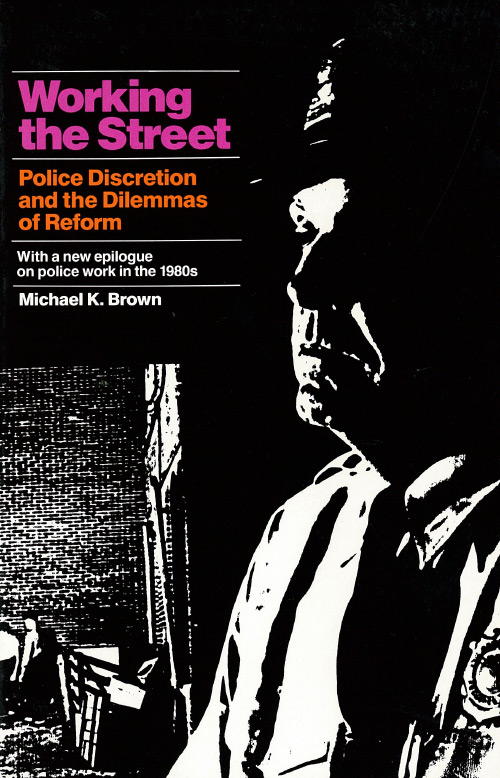 Working the Street: Police Discretion and the Dilemmas of Reform, by Michael K. Brown. Russell Sage Foundation, Revised Edition, 1988.
Working the Street: Police Discretion and the Dilemmas of Reform, by Michael K. Brown. Russell Sage Foundation, Revised Edition, 1988.
How individual police officers navigate the thicket of organizational rules and police culture at large. Notably, Brown makes the point that the police reforms that target the bureaucratic organization of the police department allowed for increased leeway of police at the expense of civilian oversight. Peter K. Manning’s review reads, “Brown rather nicely points out a number of ironies of crime-control models, approaches, and the like.
“Yes, Abolishing Qualified Immunity Will Likely Alter Police Behavior,” by Jay Schweikert. Cato at Liberty blog, Cato Institute, June 17, 2020.
Schweikert, who counters the claim that eliminating qualified immunity would do very little to change police misconduct on account of the current legal regime, writes “[E]liminating qualified immunity is one of the most practical, promising ways to encourage police to conform their behavior to constitutional limitations.”
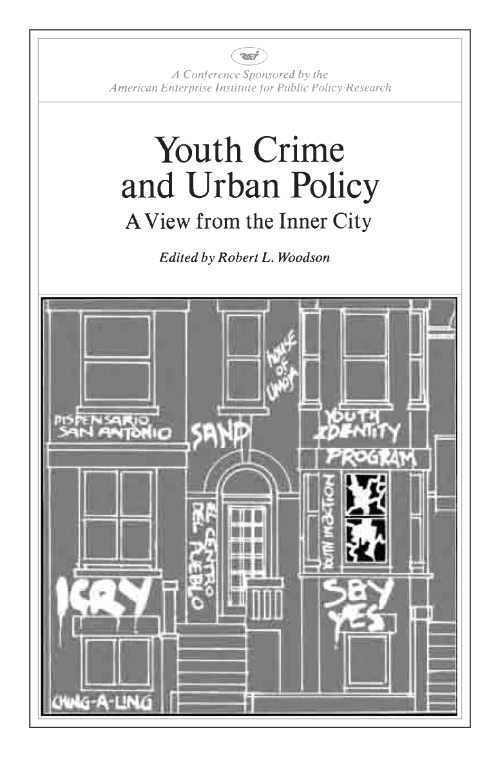 Youth Crime and Urban Policy: A View from the Inner City, ed. by Robert L. Woodson. American Enterprise Institute Press, Revised Edition, 1987. Download PDF
Youth Crime and Urban Policy: A View from the Inner City, ed. by Robert L. Woodson. American Enterprise Institute Press, Revised Edition, 1987. Download PDF
Publisher’s promotional material: “This [book of conference proceedings] explores the role of local community-based organizations that have successfully controlled youth crime in major urban centers in this country. It brings together scholars, nonprofessional community leaders, former gang members, and others concerned about crime-ridden urban areas, who discuss their experiences and philosophies and examine their remarkable record of success with ‘high-risk’ youth. Solutions to social problems will not come primarily from academic discussion, from human service professionals, or from government authorities, they conclude. The people themselves must participate in the formulation of the policies that affect them.”


